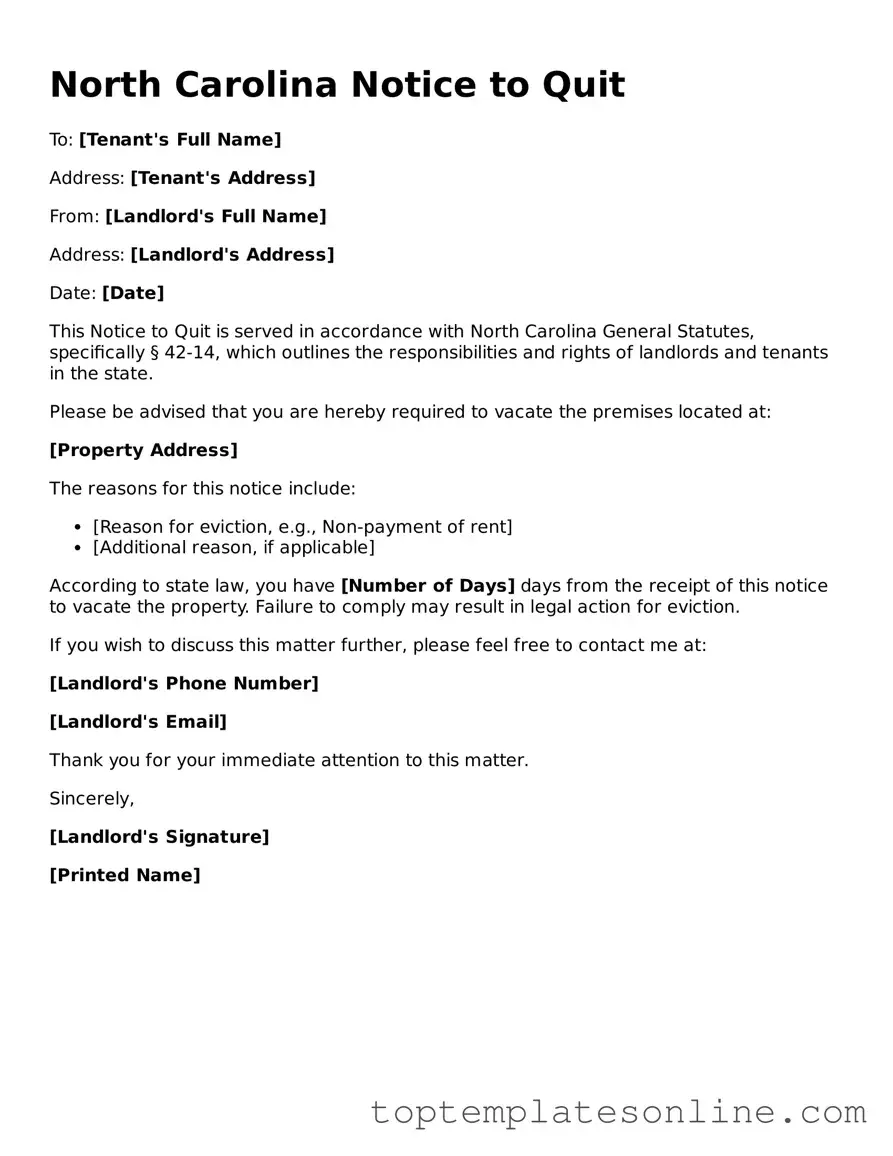Blank Notice to Quit Template for North Carolina State
The North Carolina Notice to Quit form is a legal document used by landlords to notify tenants of their intent to terminate a lease agreement. This form outlines the reasons for eviction and provides the tenant with a specified time frame to vacate the property. Understanding this form is crucial for both landlords and tenants to ensure compliance with state laws and to protect their rights.
Customize Notice to Quit Here
